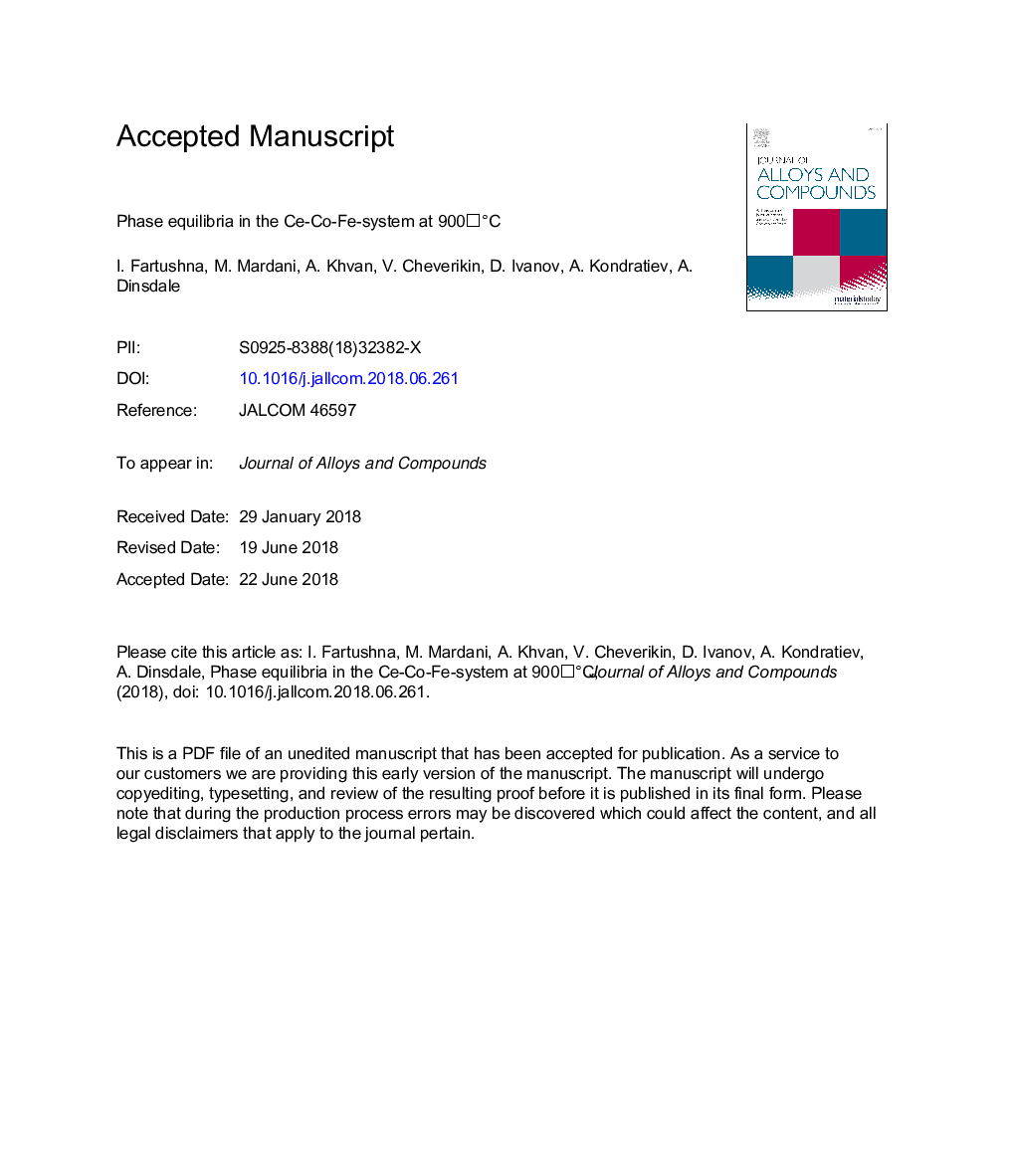| Article ID | Journal | Published Year | Pages | File Type |
|---|---|---|---|---|
| 7990567 | Journal of Alloys and Compounds | 2018 | 21 Pages |
Abstract
The Ce-Co-Fe phase diagram was investigated for the whole concentration range at 900â¯Â°C, using X-Ray diffraction (XRD), scanning electron microscopy (SEM) and electron probe microanalysis (EPMA). An isothermal section at this temperature was constructed. Two continuous solid solutions Ce2(Co,Fe)17 (Th2Zn17-type structure, hR57-R-3m) and Ce(Co,Fe)2 (MgCu2-type structure, cF24-Fd-3m), found by us both at the solidus temperatures and at 900 °C, contain 11 and 33.3 at.% Ce, respectively, due to mutual substitution of Fe and Co atoms. The liquid phase is present in the system at 900 °C. The isothermal section at this temperature is characterized by the five three-phase regions (αFe) + (αCo) + Ce2(Co,Fe)17, Ce5Co19 + CeCo5 + Ce2Co7, CeCo5 + Ce2(Co,Fe)17 + Ce2Co7, Ce2Co7 + Ce2(Co,Fe)17 + CeCo3 and CeCo3 + Ce2(Co,Fe)17 + Ce(Co,Fe)2 and associated two-phase fields. CeCo3 and Ce2Co7 show the widest homogeneity regions and dissolve up to 49â¯at.% and 21â¯at.% Fe respectively. The solubility of Fe in the other crystalline phases is smaller.
Related Topics
Physical Sciences and Engineering
Materials Science
Metals and Alloys
Authors
I. Fartushna, M. Mardani, A. Khvan, V. Cheverikin, D. Ivanov, A. Kondratiev, A. Dinsdale,
